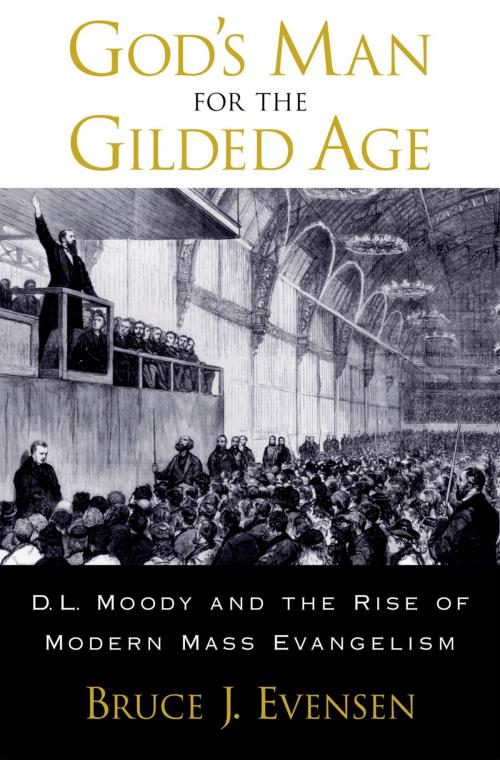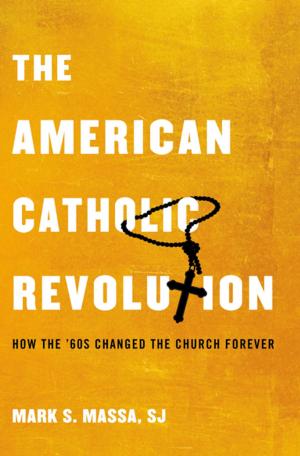God's Man for the Gilded Age
D.L. Moody and the Rise of Modern Mass Evangelism
Nonfiction, Religion & Spirituality, Christianity, Evangelism, Church, Church History| Author: | Bruce J. Evensen | ISBN: | 9780190289980 |
| Publisher: | Oxford University Press | Publication: | September 25, 2003 |
| Imprint: | Oxford University Press | Language: | English |
| Author: | Bruce J. Evensen |
| ISBN: | 9780190289980 |
| Publisher: | Oxford University Press |
| Publication: | September 25, 2003 |
| Imprint: | Oxford University Press |
| Language: | English |
At his death on the eve of the 20th century, D.L. Moody was widely recognized as one of the most beloved and important of men in 19th-century America. A Chicago shoe salesman with a fourth grade education, Moody rose from obscurity to become God's man for the Gilded Age. He was the Billy Graham of his day--indeed it could be said that Moody invented the system of evangelism that Graham inherited and perfected. Bruce J. Evensen focuses on the pivotal years during which Moody established his reputation on both sides of the Atlantic through a series of highly popular and publicized campaigns. In four short years Moody forged the bond between revivalism and the mass media that persists to this day. Beginning in Britain in 1873 and extending across America's urban landscape, first in Brooklyn and then in Philadelphia, New York, Chicago, and Boston, Moody used the power of prayer and publicity to stage citywide crusades that became civic spectacles. Modern newspapers, in the grip of economic depression, needed a story to stimulate circulation and found it in Moody's momentous mission. The evangelist and the press used one another in creating a sense of civic excitement that manufactured the largest crowds in municipal history. Critics claimed this machinery of revival was man-made. Moody's view was that he'd rather advertise than preach to empty pews. He brought a businessman's common sense to revival work and became, much against his will, a celebrity evangelist. The press in city after city made him the star of the show and helped transform his religious stage into a communal entertainment of unprecedented proportions. In chronicling Moody's use of the press and their use of him, Evensen sheds new light on a crucial chapter in the history of evangelicalism and demonstrates how popular religion helped form our modern media culture.
At his death on the eve of the 20th century, D.L. Moody was widely recognized as one of the most beloved and important of men in 19th-century America. A Chicago shoe salesman with a fourth grade education, Moody rose from obscurity to become God's man for the Gilded Age. He was the Billy Graham of his day--indeed it could be said that Moody invented the system of evangelism that Graham inherited and perfected. Bruce J. Evensen focuses on the pivotal years during which Moody established his reputation on both sides of the Atlantic through a series of highly popular and publicized campaigns. In four short years Moody forged the bond between revivalism and the mass media that persists to this day. Beginning in Britain in 1873 and extending across America's urban landscape, first in Brooklyn and then in Philadelphia, New York, Chicago, and Boston, Moody used the power of prayer and publicity to stage citywide crusades that became civic spectacles. Modern newspapers, in the grip of economic depression, needed a story to stimulate circulation and found it in Moody's momentous mission. The evangelist and the press used one another in creating a sense of civic excitement that manufactured the largest crowds in municipal history. Critics claimed this machinery of revival was man-made. Moody's view was that he'd rather advertise than preach to empty pews. He brought a businessman's common sense to revival work and became, much against his will, a celebrity evangelist. The press in city after city made him the star of the show and helped transform his religious stage into a communal entertainment of unprecedented proportions. In chronicling Moody's use of the press and their use of him, Evensen sheds new light on a crucial chapter in the history of evangelicalism and demonstrates how popular religion helped form our modern media culture.















